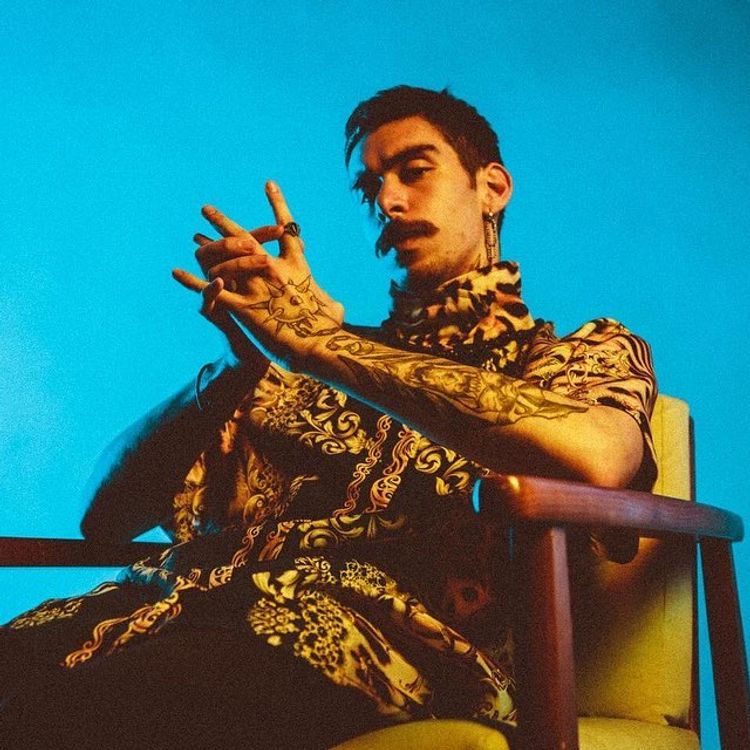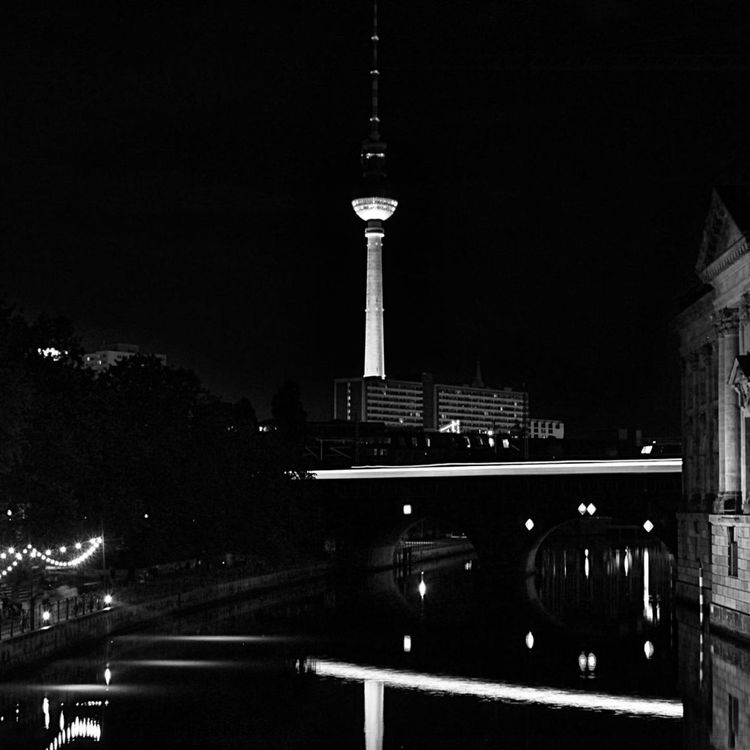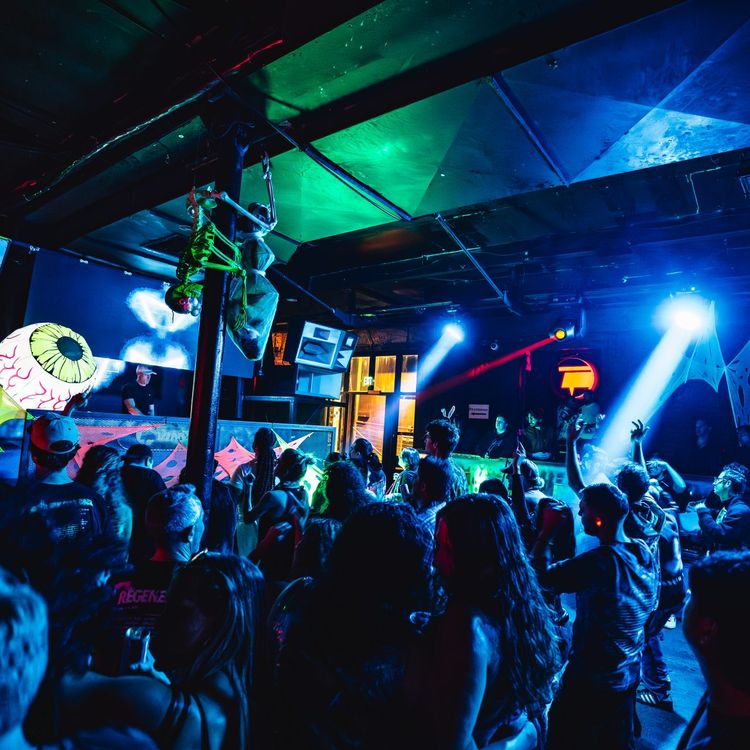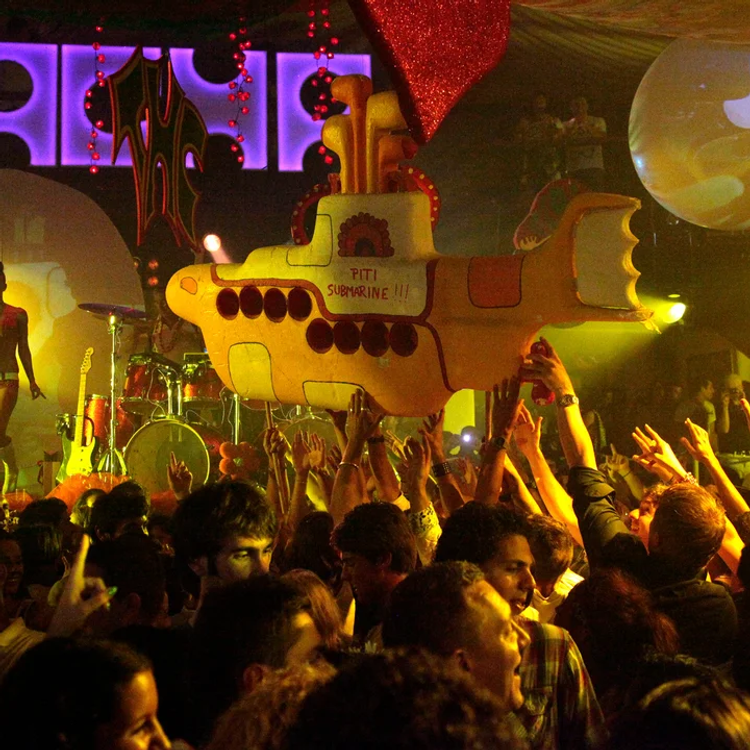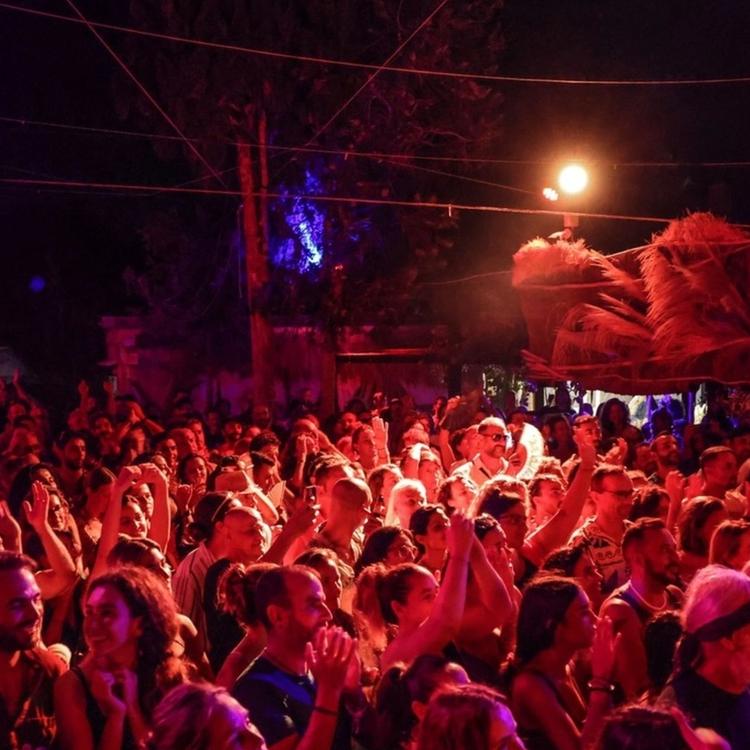Mochakk Calling: Exclusive Interview on the Line
Pedro Maia, better known as Mochakk, has become one of the most talked-about names in house music over the past few years — and not by accident. Born in Sorocaba, Brazil, in 1999, Mochakk’s rise from bedroom beatmaker to international festival headliner has been fast but intentional. With his signature mullet, neck tattoos, sharp mustache, chunky chain, and wraparound sunglasses, Mochakk doesn’t just show up behind the decks — he owns the room the second he steps up. Watching him perform is like watching music come alive through his body: every beat, drop, and twist synced perfectly to his movement, like the tracks are wired directly into his bones. His stage presence is a huge part of what’s turned him into a standout in the industry, especially among dance music fans drawn to his mix of wild style, nonstop energy, and next-level tracklist knowledge.
With musical DNA in hip hop, funk, disco, and rock — and early days DJing underage parties in São Paulo — he’s made a name for himself with shapeshifting sets that throw down classic house, Brazilian rap, Latin heat, and whatever else keeps the dancefloor fired up (just ask anyone who lost it when “Da Fonk” hit on Nervous Records). A viral TikTok clip of his playful, dance-fueled spirit behind the decks pushed him into the spotlight, opening doors to major bookings at Circoloco (DC-10), Sónar, Coachella, and his own headline events. But what stands out most is how Mochakk has used that momentum to build something larger — whether it’s launching his own labels (Dogghäuz and MOTRAXX), opening his Sorocaba-based club OBLIQO, or developing the Mochakk Calling party series, which has sold out across cities like New York, Miami, and Lisbon.

His projects — the two-part Locomotiva Ibiza 2099 II EP on Circoloco Records and his most recent From the Stars EP — are prime examples of his ear for sampling, while his curated parties reflect a strong sense of visual and cultural identity, influenced by his background in fashion and his love of São Paulo’s urban spark.
In this interview, Mochakk dives into his early life, masterful production methods, and the surprising (and hilarious) stories from the road — including fans dancing with fish, themed ice cream truck pop-ups, and his ambitious vision for the Mochakk Calling festival. He also teases what’s ahead for his massive June 21 takeover at Brooklyn Army Terminal, a show he’s calling the biggest Mochakk Calling party yet — promising a night for the books against one of NYC’s most iconic open-air backdrops.

What was the turning point when you realized music was going to be your full-time path?
I fell in love with electronic music when I was around fourteen or fifteen. I was already copying beats I heard in hip hop tracks I liked, then I met my friend Cesar Nardini (he’s now my partner at our label, Dogghäuz Records, and our club in Sorocaba, OBLIQO). Back then, he was throwing these underage parties at a club in our hometown, and one day he asked me to help sell tickets.

That small favor turned into something way bigger, and before I knew it, I was DJing at the parties myself. We’d leave school early and go to the club, and they’d open it up just for us so we could practice on the equipment.
I kept going, kept learning, just practicing nonstop. Eventually, after a few gigs, I saved up enough money to buy a mini controller and started training at home every day. I completely fell in love with it. From there, things started moving fast… and somehow, this crazy passion turned into my full-time gig.

How did launching your label Dogghäuz change your perspective on producing and releasing music?
When I moved to São Paulo, I started going out a lot. It just became natural to hit a party, hear something crazy on the dancefloor, Shazam it, then go home and dig deep into what I’d found. I was constantly absorbing new sounds and trying to blend that vibe from the nightlife into what I was producing.
Launching Dogghäuz with my best friends shifted my whole perspective. Having our own label meant I could really put my creative vision out there — not just with my own tracks, but also in building something bigger with all the DJs and producers we think are really killing it in the Brazilian scene. It gives us the freedom to shape a sound, but also the chance to spotlight artists we believe in, since the label is invite-only, whether they’re sending me demos or people we want to work with directly. It’s about creating a space where all of that can come together.
Your sound is known for its variety — classic house, Brazilian rap, and tech-house. How do you decide which direction to take for each track?
For me, the job of a DJ is to surprise people, to show them something new, to curate and share music in a way that makes them feel something different. Back in the day, DJs got booked because they brought something unique to the table, something people hadn’t heard yet. I want to hold on to that purpose because that’s what pulled me into this in the first place.
So when I’m working on a track, the direction I take really depends on what I’m feeling, what I’ve been listening to, and what I want to express in that moment. Sometimes it leans more into classic house, sometimes it’s Brazilian rap, sometimes it’s drum and bass or funk — it’s all about the energy.
How did growing up with funk, disco, and rock influence your approach to DJing?
If you only listen to one thing, your perspective gets too limited to one box. But when you open yourself up to different genres and really pay attention to the creativity and thought behind them, your whole musical world expands. That mindset helped me build a broader rhythm vocabulary, and that’s everything when you’re DJing.

The more grooves you understand, the more you can connect with different crowds, blend unexpected elements, and keep things fresh. All those influences are still with me, and I think they show up in the way I build sets, read energy, and create flow on the dancefloor.
Circoloco at DC-10 is a milestone for any artist. What was your first time playing there like?
My very first time on the island was in 2022 — and it’s crazy that I was there as the DJ, not even as a partygoer. Playing at a legendary spot like DC-10 was completely insane; I was super nervous, actually. It’s one of those places you dream about, and suddenly I was on the line-up alongside people I’d looked up to for years — Seth Troxler, Dixon… just unreal. That moment really hit me differently. It felt like one of those milestones where everything you’ve worked for starts to make sense.
Mochakk Calling is more than just a party — it’s a full-on experience. How hands-on are you with the creative direction of those events?
Mochakk Calling actually came from one of the guys on the team. We needed a name and a concept for a party, and “Calling” just clicked — like calling up your friends to come along. It stuck, and from there, we realized we could have a lot of fun with it. The whole theme gave us room to play, not just with visuals, but even with how we write the copy and build the vibe around each event.

I’m super hands-on with the creative direction. I’ve always been inspired by São Paulo’s industrial energy, and that influence runs through everything — from the visuals to the scenography to the venues. It’s all connected. For me, it’s not just about throwing a party; it’s about creating a full experience that feels intentional from start to finish.
The ice cream truck pop-up in NYC was wild. How did that idea come about?
When I think of NYC, I think of food trucks everywhere, so doing an ice cream truck pop-up just felt like the perfect surprise. It was summer, the vibe was right, and it felt like the ultimate treat. It was so much fun serving ice cream, chatting with people, just creating this unexpected little moment before the party even started.

The whole idea was to make it more than just a show. I wanted it to feel like a full experience, something people would remember not just for the music.

You’ve thrown Mochakk Calling parties in cities around the world. Which city surprised you the most with its energy?
Each city brings its own vibe, so it’s hard to pick just one, but I was definitely surprised by how loud people get in Italy. They scream during the sets just like we do in Brazil, and I wasn’t expecting that energy to match so perfectly. It felt like home in a totally different place. We also just did Mochakk Calling in Miami and Chicago, and both of those were insane. The crowd in Miami was massive, and what blew me away was how many people knew the tracks… they weren’t just dancing, they were fully locked in, reacting to every drop.

The Brooklyn Army Terminal is a massive historical space. What can fans expect from this New York edition?
The Brooklyn Army Terminal just feels like the perfect spot for Mochakk Calling NYC. It’s got that raw, urban energy — gritty, open, with a rave vibe that lets the music and visuals hit hard. NYC is such a special city for me because it reminds me the most of São Paulo. Every time I’m there, I think about jazz and hip hop influenced by jazz, the ’90s and early 2000s sound. It fits the city’s massive, concrete jungle vibe.

Photo Credit: Adinayev at Factory Town
That kind of music is what I listen to a lot during the week when I’m home, and I try to bring those influences into my sets there. I’m really excited for this one — it feels like it’s going to be one of the biggest Mochakk Calling parties yet. Can’t wait to see how it all comes together in NYC!
You’ve been called a “music nerd” who would have been crate-digging if it were the vinyl era. What’s the most unexpected sample you’ve worked with?
At the last Mochakk Calling NYC, I dropped this strange, trippy opera track mixed into a house beat, and surprisingly, people were totally down with the weirdness. That kind of unexpected blend is what keeps things exciting for me. I also love sampling famous speeches. For example, I’ve got this unreleased track that features an excerpt from Leonardo DiCaprio’s United Nations speech on climate change — I actually dropped that one during my Cercle set in Seville.
Using samples like that adds a whole other layer. It’s powerful and thought-provoking, and it connects the music to something bigger. That’s the kind of stuff that gets me really hyped in the studio.
You’ve spoken about chopping samples in ways that make them feel like the original idea. Can you share a recent track where that really clicked?
The lead track from my EP with Ninja Tune, “From the Stars,” really shows this approach. It samples the RAH Band’s “Messages From the Stars,” and I was blown away by how the intro has this constant upward motion — it builds and builds until the bass drops with that huge synth.
The original, though, is way slower and has that classic ’80s beat, which sometimes doesn’t flow with the other tracks I play at my shows. So I chopped and reworked it to keep the spirit and energy intact but make it fit the vibe I want on the dancefloor. That balance of respecting the original idea while making it fresh and coherent is what really clicked for me on this one.
Your visual aesthetic, especially with Mochakk Calling, is bold and unique. How much does fashion and design influence your music projects?
Fashion and design play a huge role in my music projects, especially with Mochakk Calling. I went to fashion school and have always loved street style and playful graphics, which I bring into the merch. My goal is to create a special-edition T-shirt for every Mochakk Calling party that gives a nod to the city we’re in. For example, last year in NYC, we dropped this wild white-on-black design with a glitchy, six-armed version of me holding old phones, pagers, and computers, with “Available 24/7” printed below.

Photo Credit: Adinayev at Factory Town
It’s all about capturing the vibe visually. When it comes to the parties themselves, one of my favorite things is being able to fully curate the music and the visuals to fit the vibe and look of the space. The energy and visuals of the venue really influence what I play — I feel like the music has to match the space so the whole experience hits all the senses. For me, that connection between sound and style is really cool to explore.
If you could throw a Mochakk Calling party anywhere in the world, with no budget restrictions, where would it be?
Honestly, I feel like that’s already happening soon with the very first Mochakk Calling Festival in Malta! It’s this incredible chance to bring a huge selection of music for people — something for every taste, but also plenty of room to discover new sounds. The festival’s happening in Malta from July 26th and 27th. I want the focus to be less about the big-name headliners and more about those moments where you discover music that sticks with you forever.

Photo Credit: Adinayev at Factory Town
We’ve got an amazing lineup with DJs I listen to myself, like Honey Dijon, Mall Grab, Bonobo, DJ Swisha, HAAi, Chaos in the CBD, Seth Troxler, Dixon… and we’re also bringing some of my favorite Brazilian DJs like BADSISTA, Cesar Nardini, Jay Mariani, Pricila Diaz, RHR — on this epic island in the summer. Throwing a two-day Mochakk Calling festival, not just a party, like this in such a paradise spot feels like a dream come true.
What’s the weirdest fan interaction you’ve had so far?
I actually talked about this in a video recently — one time I was playing a club in Rio on the beach, and someone went into the ocean, grabbed a big fish, and was dancing with the fish between their legs. That was pretty crazy!
You don’t miss a beat when you perform behind the decks. Is there anything you can say about how well you feel the music? Where does your rhythm stem from?
I don’t want to box myself into being just one thing. I want to be as expansive and limitless as the music I love. When I hear a track that moves me — whether it’s making me dance, sing, or just feel something deep — I let myself fully dive into it. That connection between me and the music is the same vibe I feel from the crowd in front of me.

For me, that’s where my rhythm comes from: the passion and authenticity of really loving the music, not just playing it. It’s that vibe I want to bring every time I’m behind the decks, and it’s what I hope sparks in everyone who’s at my shows.

